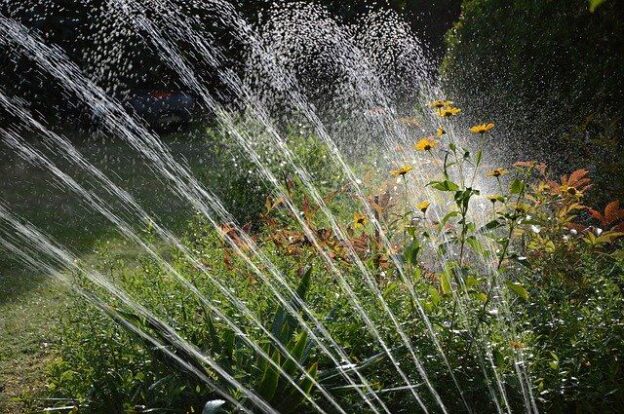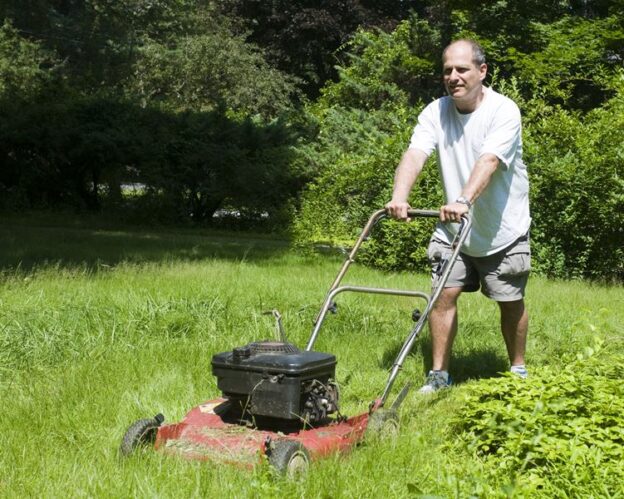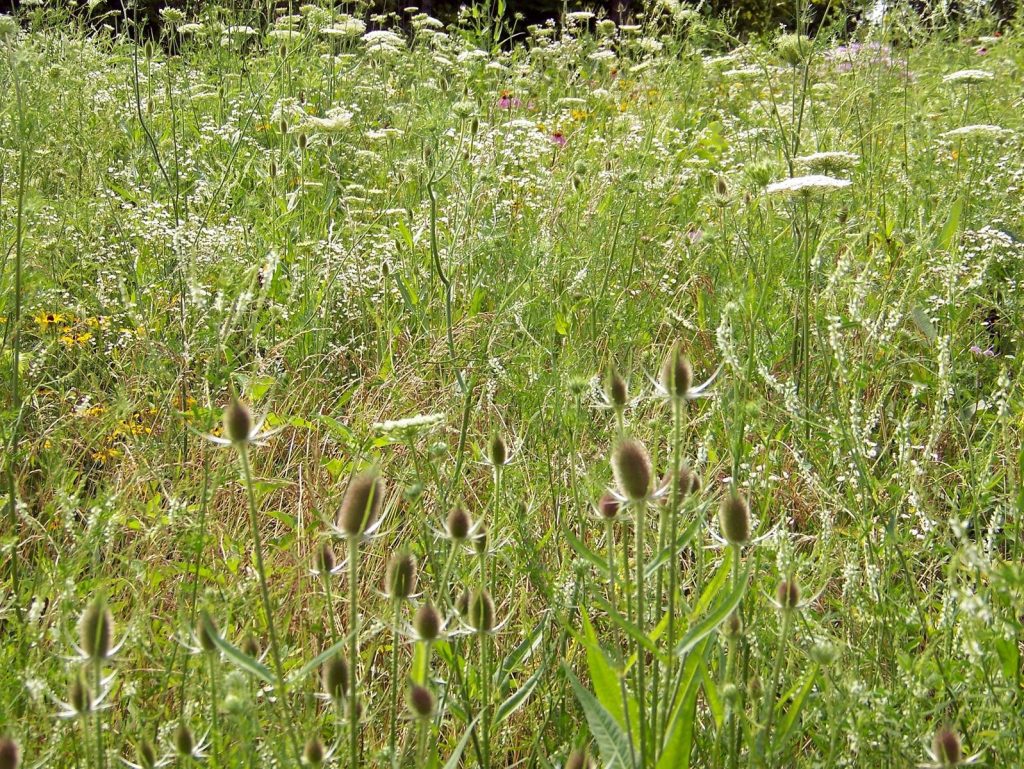reposted with permission
The plants we call weeds have a role in nature. This means they have a purpose and that purpose is most often to fix soil problems To ensure we have a good supply of weeds in our gardens and lawns, we need to use bad soil or mess up the soil that we have and turn it into dirt. The plants we often call weeds love soils (really just dirt) that are full of bacteria and very little fungi. So how can we create dirt full of bacteria?
Weed-Growing Tips
One of the best ways is to apply a full spectrum fungicide. Healthy soil can have up to 3,000 species of fungi in a tablespoon of soil. A broad-spectrum fungicide will kill all or most of these good guys. To ensure we do a thorough job, it is best to reapply the fungicide several times.
Step two is to apply a glyphosate-based herbicide like Round-Up Glyphosate is broken down by bacteria hence it creates an explosion of bacteria in the soil that weeds love. This is why weed problems tend to become worse after using these type of herbicide products. As a bonus, glyphosate also acts as a mineral chelator, and minerals such as calcium, zinc, copper, and manganese act as cofactors in many enzymes. This mineral suppression opens the plant up to disease, especially our perennials which again selects to make a better dirt for weeds to grow.
Step three is to reduce the oxygen levels in the soil as bacteria can live in low oxygen levels where the good guys — like beneficial fungi, microarthropods, earthworms, etc. — cannot live. One of the best ways to do this is to apply an artificial fertilizer. All artificial fertilizers are chemical salts.
To use an analogy, what happens to a pair of pliers left out in the rain and dew for a few weeks? It becomes locked up (frozen) as the salt called iron oxide or rust is formed. Similarly, the salts in artificial fertilizers can lock up soil particles forming hardpan that prevents oxygen and water from entering the soil. Another benefit of these salts is that they often kill earthworms. Earthworms aerate the soil, just the opposite of what is required for a good crop of weeds. Additionally, many species of earthworms eat weed seeds! How can we have a good crop of weeds if we let their seeds be eaten and destroyed? Note: Another way to get rid of these pesky earthworms is to apply a pesticide, as many of them also kill earthworms.
Another way to help ensure a good crop of weeds is to water regularly and watering daily is best. Water in the dirt fills up the pore space preventing oxygen from being there. Municipal water also has chlorine in it. Many of the soils along the Gulf Coast are high in sodium hence when we water a lot, the sodium (Na) combines with the chlorine (Cl) in the water, forming table salt (NaCl). Note: This salt effect can be increased by using amendments high in salt such as cow manure or poultry manure products which ensure that you are creating conditions to help the weeds grow strong. As an extra bonus fluoride in the municipal water generally remains in solution and plants are exposed to this chemical by water, air, and soil. Fluoride is a poison that accumulates in plant foliage and often leads to toxicity symptoms on sensitive plants. This happens over time thus we may not realize why are plants are getting sick and declining or just die suddenly. Fluoride strongly inhibits photosynthesis and other processes in many plants. It is absorbed by the roots (or stomata) and moves through the plant accumulating in the leaf margins. A wide variety of plants are fluoride sensitive. A few examples by common name are: apricots, box elder, blueberry, sweet corn, Douglas-fir, gladiolus, grapes, Oregon grape, western larch, peach, pine, plum, blue spruce, tulip, corn plant, yucca, spider plant, Tahitian bridal veil, lilium spp.are: apricots, box elder, blueberry, sweet corn, Douglas-fir, gladiolus, grapes, Oregon grape, western larch, peach, pine, plum, blue spruce, tulip, corn plant, yucca, spider plant, Tahitian bridal veil, lilium spp. Some of our plants are very fluoride sensitive to as little as 1 ppm in water and a wide variety of plants are subject to fluoride damage which weakens them. However, many common weeds are not sensitive to fluoride which allows the weeds to out-compete our other plants. Hence, make sure those irrigation systems are set to come on every day to ensure the best and highest number of weeds.
Watering regularly is also loved by the sedge family of weeds like nutsedge and others like dollar weed. These weeds really appreciate you helping them out. Healthy fertile productive soils have a carbon to nitrogen ratio (C:N) of 30 to 1 written 30:1. To have a lot of weeds we must prevent this from occurring. One of the best ways to do this is use a dyed mulch (black, red, blue, etc.) on our flower beds. For the dyes to stick it works best on mulch made from old pallets, trash wood, etc. that have a C:N ratio of over 500:1. This helps ensure that required nutrients for healthy plants are tied up and weakens the ornamental plants so they cannot compete against the weeds.

Many companies want you to be successful in growing weeds and want to help you as it helps them also, as it is very profitable for them. Below is an advertisement from a trade magazine that explains why so many companies sell dyed mulch as they take your money and help you kill your plants so one can have a good weed crop.
Many weeds prefer soil low in nutrients or elements. Weeds like dandelion will not grow very well if at all, or the seed will not even germinate IF the soil has plenty of available calcium (Ca). This means we should never use products like re-mineralizer or greensand, bone meal, etc. that provide extra calcium in the correct form. Most weeds do not like soils with lots of available nutrients. Another effective way of growing weeds is to never mulch at all. This allows the soil to quickly dry out, soil temperatures to soar which cooks the roots of our ornamental plants greatly stressing and weakening them. Nature hates bare ground hence nature will quickly cover the soil with a good crop of weeds which can easily out-compete the stressed plants.
In lawns, one of the best ways to have happy weeds is to cut the grass very short. For example, St. Augustine grass will naturally grow to 15-18 inches tall. When we cut it to 3 inches or less, we stress the grass out which weakens it. As a result, it cannot out-compete the weeds. Many species of weeds require sunlight for their seeds to germinate. Cutting the grass short ensures that plenty of sunlight reaches the ground to help the seeds out. If the grass is cut at four inches or higher the blades of St. Augustine are so thick, they block the sunlight from reaching the ground which shades it, preventing the weeds from germinating. Luckily, most lawn mowers are made for Northern grasses that need to be cut short and can only cut 2-3 inches tall without modifications.

Another item that helps the weeds grow in lawns is to make sure one uses a dull mower blade. The duller the blade the more it tears and stresses the grass weakening it which makes it easier for weeds to get established. Another benefit of cutting the grass short (lack of leaf surface for photosynthesis) is that the roots of the grass will not go deep into the dirt. For grass to be healthy it needs an even amount of water, when we mow the grass short it reduces the amount of nutrients and water the roots can get, which also weakens the grass and helps the weeds. The grass dries out easily and quits growing very much allowing the weeds to gain the advantage.
As most weeds like poor quality soil or dirt, one should never top-dress their lawns or flower beds with a good compost. Also, avoid humates at all cost as both of these materials improves the soil and helps the soil become healthy. Most weeds do not like healthy soil. It goes without saying one should never aerate one’s soil before topdressing as it allows oxygen to enter the soil and undo the compaction that many weeds like. For those who want extra credit, there are a few other things one can do to increase the number of weeds one has. A common method of increasing your weed population is to apply nutrient amendments when In lawns, one of the best ways to have happy weeds is to cut the grass very short. For example, St. Augustine grass will naturally grow to 15-18 inches tall. When we cut it to 3 inches or less, we stress the grass out which weakens it. As a result, it cannot out-compete the weeds. Many species of weeds require sunlight for their seeds to germinate. Cutting the grass short ensures that plenty of sunlight reaches the ground to help the seeds out. If the grass is cut at four inches or higher the blades of St. Augustine are so thick, they block the sunlight from reaching the ground which shades it, preventing the weeds from germinating. Luckily, most lawn mowers are made for Northern grasses that need to be cut short and can only cut 2-3 inches tall without modifications.
Another item that helps the weeds grow in lawns is to make sure one uses a dull mower blade. The duller the blade the more it tears and stresses the grass weakening it which makes it easier for weeds to get established. Another benefit of cutting the grass short (lack of leaf surface for photosynthesis) is that the roots of the grass will not go deep into the dirt. For grass to be healthy it needs an even amount of water, when we mow the grass short it reduces the amount of nutrients and water the roots can get, which also weakens the grass and helps the weeds. The grass dries out easily and quits growing very much allowing the weeds to gain the advantage. they are not needed. For example, applying Epson salts (magnesium sulfate) is a common practice. If these elements are not needed as shown by a soil test, this will load the soil with extra magnesium (Mg) changing the calcium to magnesium ratio. This will cause many soils to turn into hardpan full of compaction issues that many weeds love. Similarly applying gypsum (calcium sulfate) when calcium is not needed will also cause soil problems and help many species weeds to grow better.
Another way to increase weeds is to use what is known as ashen mulch. Many companies take coal ash that is full of heavy metals and is extremely alkaline (more alkaline than drain cleaners like Drano) and mix it into their mulch. In a couple of days it chemically burns the mulch black. When one applies it to their soil it changes the pH (acidity) making the soil alkaline tying up nutrients so our plants cannot absorb them. This makes our weeds very happy and they go out and grow wonderfully. If a gardener follows these guidelines, they are assured of having lots of weeds of many kinds for years to come.

